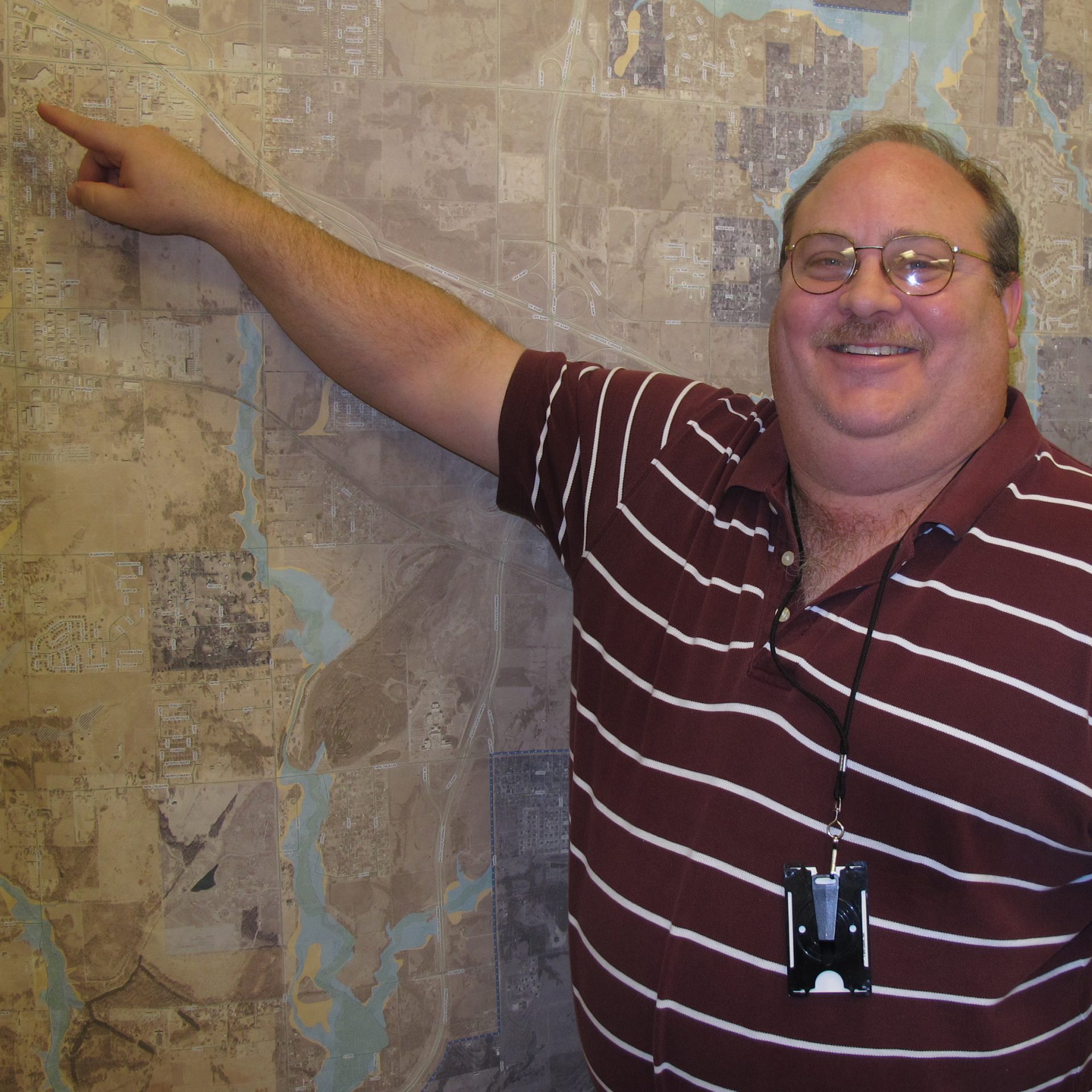
Broken Arrow Engineering Director Kenny Schwab says the city's water currently has to be piped in from 30 miles away.
Logan Layden / StateImpact Oklahoma


Broken Arrow Engineering Director Kenny Schwab says the city's water currently has to be piped in from 30 miles away.
Logan Layden / StateImpact Oklahoma
How important are the Oklahoma Water Resources Board’s financing programs for local water projects across the state?
Since 1985, close to $3 billion in low-interest loans have been secured for projects ranging from $80,000 for a water tower in rural Custer County, to $65 million for a new water treatment plant in Broken Arrow.
For Broken Arrow, going through the state programs instead of shopping for a loan itself will save close to $20 million in interest. That’s because the state has a better credit rating than most cities and towns.
Oklahoma Water Resources Board
Click here to see the Oklahoma Water Resources Board's interactive map of wastewater financing projects.
The OWRB’s Comprehensive Water Plan predicts $52 billion in water system improvements will be needed over the next 50 years, so those financing programs will be needed more and more. Last year, OWRB Executive Director J.D. strong came to the realize “we are quickly going to hit the wall on our ability to finance projects across the state.”
It was the Broken Arrow project that pushed the state’s credit to its limit.
“We didn’t have a whole lot of discussions with OWRB on, you know, what’s your capacity? What’s your max?” City Engineering Director Kenny Schwab says. “We just kind of expected, ‘OK, yeah, that’s the only route for us to really go.'”

Logan Layden / StateImpact Oklahoma
Broken Arrow Engineering Director Kenny Schwab says the city's water currently has to be piped in from 30 miles away.
The project ended up getting funded, but it stretched the financing programs about as far they could go. And with dozens of projects of projects expected to seek funding just next year, the future was cloudy.
“That’s an example of a town that actually stressed the financing capacity of our programs for the first time,” Strong says. “And so we needed to do something fairly quickly to address that before we start turning cities and towns and rural water districts out on their own.”
Tecumseh needs a new waterline from its lake to Wes Watkins Reservoir, and Bristow needs more water wells among the projects just on the priority list for the Drinking Water State Revolving Fund.
What the OWRB needed was a way to expand the amount of the state’s credit it could use to back up billions of dollars in future loans to communities and rural water districts.
The voters came through with the solution.
State Question 764 passed on Election Day by a 14-point margin. It allows the state to back up loans with up to $300 million of the state’s credit. Strong says that will make all the difference.
“This would take us from being able to leverage $2 to $300 million in any one given year to $3 billion in any one given year,” Strong says.
As KOSU reported before the election, there are those who think putting so many local water projects on the state’s credit card is a bad idea, especially when overseen by the unelected OWRB.
If cities and towns default on their loans, it could cost taxpayers. But Jennifer Wasinger, Assistant Chief of OWRB’s Financial Assistance Division, says of the nearly 2,000 projects funded through the agency, there have been only two defaults: One, a rural water district in Osage County for about $250,000; The second, a project in Delaware County for $4.8 million.
“One was consolidated into a larger system that assumed the payments where no loss occurred and the other is in a ‘work-out’ situation where we are still receiving payments,” Wasinger says.